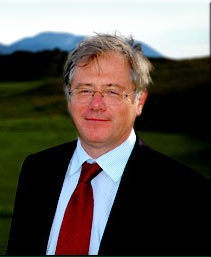One of Brazil's oldest golf clubs, featuring a course designed by Stanley Thompson, has formally petitioned to host the golf competition at the 2016 Olympics.
Itanhangá Golf Club expressed its desire last month, in an e-mail sent to Peter Dawson, the president of the International Golf Federation. “Itanhangá is consistently chosen for major Brazilian and international events for its world-class, though not overly difficult layout, and its spectacular natural setting and beauty,” the club's president wrote in the letter.
Itanhanga was founded in 1933 and is said to be among the nation's most exclusive clubs, for whatever that's worth. Its tournament course hosted an event on the PGA European Tour, the Brazil Rio de Janeiro 500 Years Open, in 2000, and more recently it's hosted an LPGA event. I wouldn't call that track record “consistent,” but the club obviously does.
More importantly, the club's “not overly difficult layout” will need to be toughened up for the Olympics. One source describes the course as a 6,600-yard, target-style track with small greens. Another source says the track is shorter, just 6,178 yards.
If chosen, the club expects to spring for renovations that will lengthen the course by about 600 yards.
Thompson, for those who may not be familiar with his work, is considered by many to be Canada's greatest golf architect. It's worth noting that one of his proteges, Robert Trent Jones, almost certainly had a hand in the design of Itanhanga's course.
It's also worth noting that Rio has just one other golf course, an 18-hole track at Gávea Golf Club. Gavea's course, which opened in about 1930, was also designed by Thompson.
sri lanka It Takes a Village
One of the most powerful elected officials in Sri Lanka says that he plans to open a new golf course “next year,” and that a Chinese company will help him build it.
Since the construction hasn’t yet begun, Namal Rajapaksa had better get cracking if he expects to meet his deadline.
The course will take shape in Hambanthota, on Sri Lanka's southern coast, as part of the city’s effort to host the 2018 Commonwealth Games. Rajapaksa, a member of parliament and the son of Sri Lanka’s president, hasn’t identified his Chinese partner, but he showed an ability to get things done when he sparked the construction of Sri Lanka’s biggest, newest international cricket stadium.
Now he’s at work on a much bigger project, a sports village that will include facilities for squash, cycling, rugby, soccer, and other sports, a technology park, a business park, and an 18-hole golf course.
Earlier this year, he told the Asian Tribune, “We are getting a lot of help from many foreign countries, including India, and we are hoping to make Hambantota the ‘sports city’ of Sri Lanka.”
The village is just one of a slew of high-profile, big-ticket projects that are planned in conjunction with the games, among them several hotels, a university, and an international airport. With or without the games, these and other development ventures are expected to boost the economic prospects of Hambantota, which was devastated by the tsunami that rose out of the Indian Ocean in 2004
scotland Much Ado About Nothing
If you design the world's greatest golf course, are you then automatically considered to be the world's greatest golf architect?
That's the question I wish CNN had answered (or even asked) in its recent profile of Martin Hawtree, the Brit who's been selected to design the forthcoming golf course at Trump International Golf Club Scotland. Donald Trump, as I'm sure you'll recall, has promised that the club's first 18-hole track will be, when it opens next summer, “the world's greatest golf course.”

Instead of exploring the challenge Trump has posed -- Hawtree is, after all, having his moment in the sun because he's landed a career-defining commission -- CNN has chosen to focus on trivialities. The story notes, for example, that Hawtree works in a “quaint, wood-beamed and low-ceiling cottage” amid “rolled-up manuscripts” that “act as proud reminders of the traditions and achievements of the practice.”
Okay. So what?
The news service even seems surprised to discover that Hawtree uses computers in his work. “They enable us to show the client the end product through computer-generated images,” one of Hawtree's associates explains.
Wow! Such marvels!
Nor is CNN helpful in explaining Hawtree's design process. On that topic, about all it could squeeze out of Hawtree is this: “On nearly every occasion, I go with my initial gut feeling for the layout.”
I feel for CNN's reporter, because I can tell you from experience that Hawtree isn't a great interview. He's modest nearly to a fault and reluctant to discuss his accomplishments -- the diametrical opposite of, say, someone like Robert Trent Jones, Jr., who'll literally talk your ear off if you let him.
No, Hawtree's personality practically defines that legendary British reserve. Here's how he explained his design philosophy to CNN: “To create a great golf course -- a fair golf course -- playable by all.”
When I read that, I was ready to hit the snooze button.
And if you're wondering how much of a pain in the neck Trump was during the design process, Hawtree told CNN that his famously controlling client “has been `hands-off' and has largely left him to his own devices.”
Yeah, sure. Not the Donald I know.
No comments:
Post a Comment